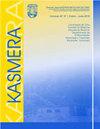Bioseguridad en los laboratorios de patología; pandemia COVID-19. Revisión narrativa
Q4 Medicine
引用次数: 0
Abstract
políticas revisión, las medidas de bioseguridad implementarse los laboratorios de anatomía patológica pandemia actual de COVID-19. Abstract World Health Organization in its laboratory biosafety manual, classifies infectious agents into 4 risk groups ranging from level 1 to 4, these levels provide a series of procedures for the protection of laboratory personnel. After the risk assessment, SARS-CoV-2 is a pathogenic virus with a high mortality rate and a problem for public health, which has been classified in risk group level 3. Surgical pathology and cytology activities typical of pathology laboratories are carried out under a biosafety level 2, due to the classification of SARS-CoV-2 within risk group 3, it is necessary to reinforce security measures to protect personnel, these laboratories play an important role in histopathological diagnosis, providing information on the pathophysiology of the disease and the mechanisms that lead to the death of patients; which will make it possible to improve the treatment of the disease and design effective public health policies. This review describes the biosecurity measures that must be implemented in pathology laboratories during the current COVID-19 pandemic.病理实验室的生物安全;COVID-19流行。修订故事
políticas revisión, las medidas de biosecuridad implementarusilos labororios de anatomía patológica实际的COVID-19大流行。世界卫生组织在其实验室生物安全手册中,将感染性病原体分为1 - 4级4个危险组,这些级别为实验室人员的保护提供了一系列程序。经风险评估,SARS-CoV-2为致病性高、危害公共卫生的病毒,属于风险组3级。典型的病理实验室的外科病理和细胞学活动在生物安全级别2下进行,由于SARS-CoV-2属于风险组3,因此有必要加强安全措施以保护人员,这些实验室在组织病理学诊断中发挥重要作用,提供疾病的病理生理学和导致患者死亡的机制的信息;这将使改善疾病的治疗和设计有效的公共卫生政策成为可能。本综述描述了在当前COVID-19大流行期间病理实验室必须实施的生物安全措施。
本文章由计算机程序翻译,如有差异,请以英文原文为准。
求助全文
约1分钟内获得全文
求助全文
来源期刊

Kasmera
医学-热带医学
CiteScore
0.02
自引率
0.00%
发文量
6
审稿时长
10 weeks
期刊介绍:
KASMERA is a scientific journal of the Department of Infectious and Tropical Diseases of the Faculty of Medicine. University of Zulia. Maracaibo Venezuela. Publishes an annual volume in two numbers (January-June and July-December). Accepts original articles, brief communications, clinical cases, essays and reviews, related to Tropical Medicine and Microbiology in general (bacteriology, mycology, parasitology and virology) in its different areas: morphology, biology, immunology, clinical, epidemiology and treatment, not only in human health but also in animal or environmental health, including food safety and safety. It is an open access journal that does not have an embargo period for the visualization of works, open access is protected by an international Creative Commons 4.0 license, which allows non-commercial use, distribution and reproduction without restrictions in any means, as long as the original work is duly cited. The magazine does not have article processing charges (APC) for any concept, that is, no charges are generated for the publication or edition of the manuscripts sent to the editorial committee.
 求助内容:
求助内容: 应助结果提醒方式:
应助结果提醒方式:


